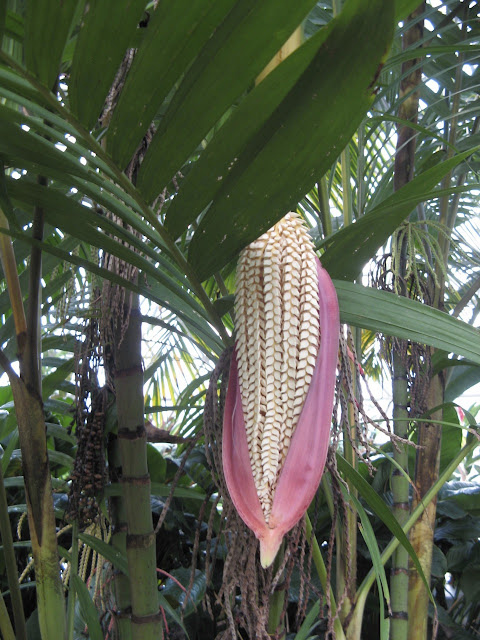The rain I mentioned in last week's posting was indeed welcome. However, we are now waiting for further follow-up rain to keep the ground moist.
In the meantime the world of ikebana continues to be busy. On Monday last I attended a Sogetsu Branch workshop led by the sisters-in-law Toula and Betty Karanikolopoulos. They are both long- standing members of our branch and were also students of my first Sogetsu teacher, Carlyne Patterson.
The theme of the workshop was to make some ikebana using dried materials from palm trees. Wikipedia tells me that there are around 2600 species of palm. I am fairly confident that the only Australian native palm that grows in Victoria is the 'Cabbage Tree' palm, Livistona australis. The dried parts of palms that were used were the: inflorescence (fruiting stems), the flower-covering spathes and the fronds, often the broad part of the frond which attaches to the trunk.
This photo, taken in a Queensland garden, shows the inflorescence of an exotic species of palm just starting to open.
The same inflorescence a couple of days later.
And a close-up of the fruit forming.
Two spathes showing front and back, from my garage collection.
A very dusty old inflorescence...
Below is the work of four of my students who attended the workshop.
Ellie Welkamp
Eugenia Chudacek
Helen Novic
Robyn Unglik.
Follow this link to the entry on the Sogetsu Victorian Branch website to see more photos from the workshop.
Greetings from Christopher
22nd April 2018










Thanks for posting the palm pictures, that inflorescence was so pretty. I had no idea there were so many different palm trees! I enjoyed the interesting photos from the Sogetsu Victorian Branch workshop.
ReplyDeleteChristopher. Thank you. I was researching a sculpture by Brett Whiteley called Pelican (1983) which is cast in bronze, but which I'm certain started as his own inspiration from a palm tree's debris. Now, thanks to you, the I now know the correct part of the tree is the 'spathe'. Happily informed.
ReplyDelete